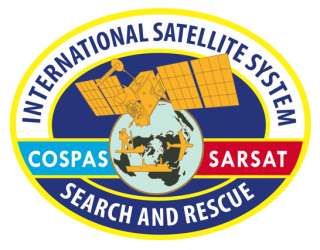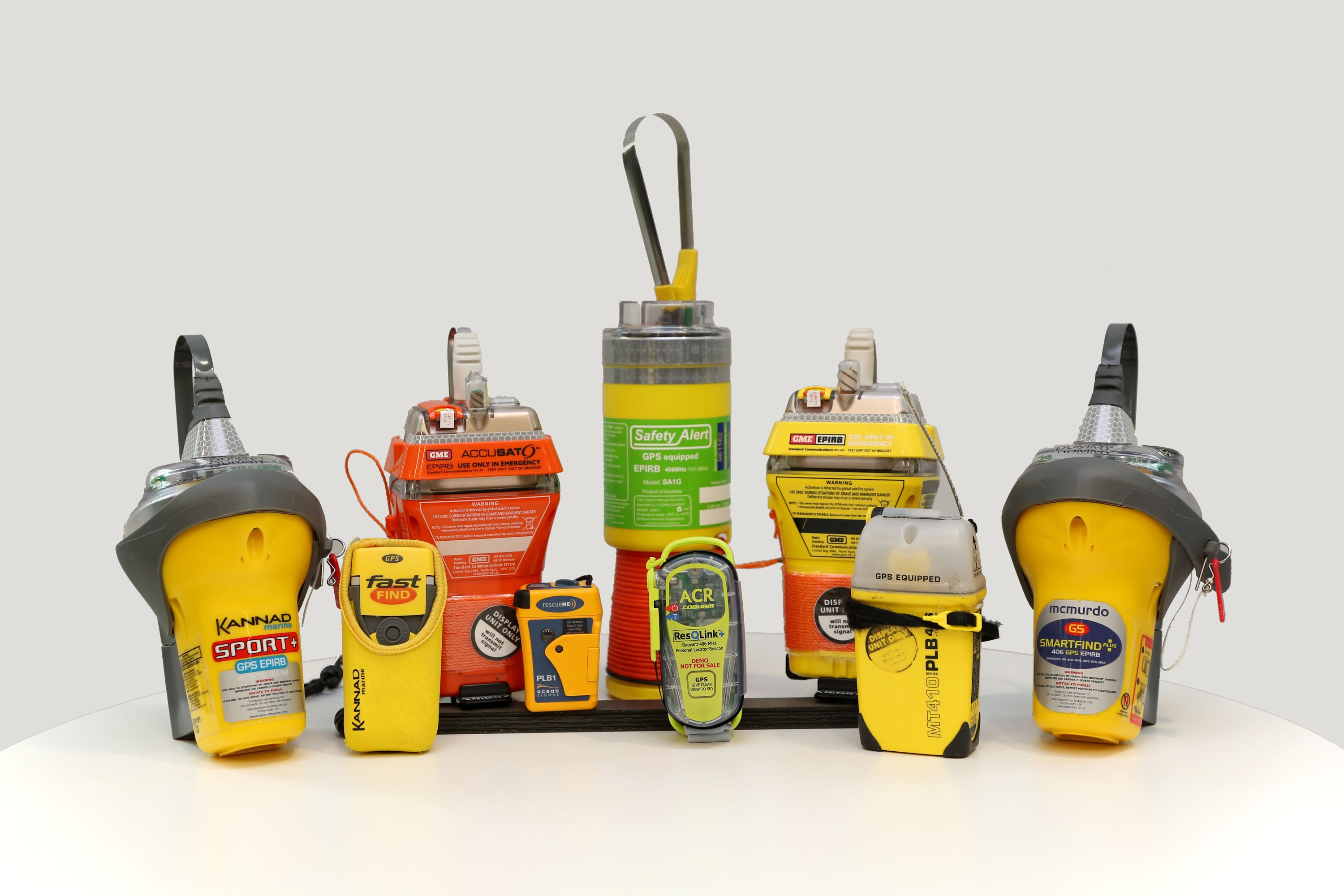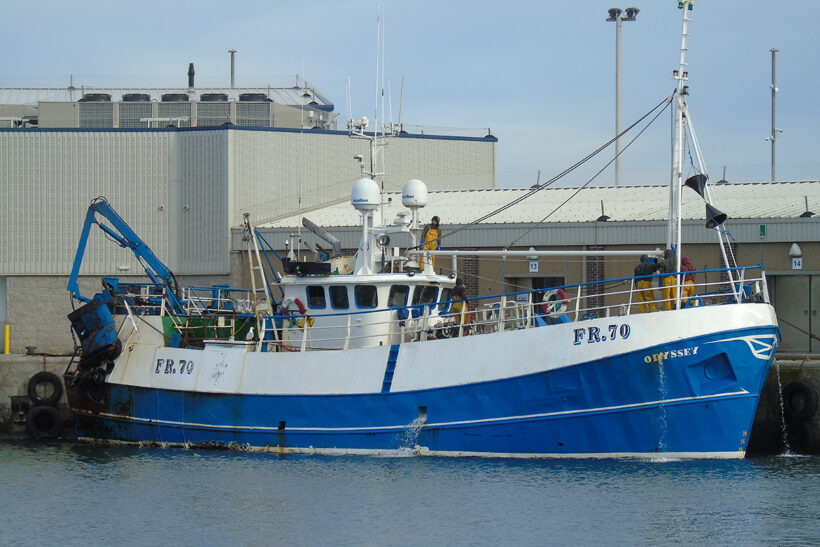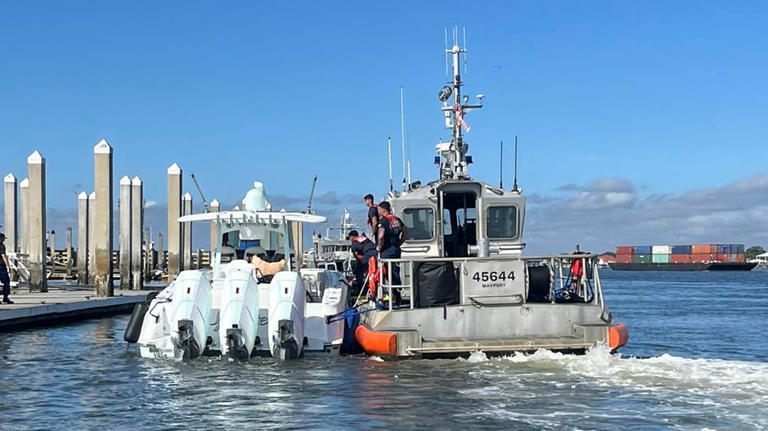What is a Cospas-Sarsat beacon?
A Cospas-Sarsat beacon, also called a distress radio beacon or emergency beacon, is a radio transmitter that can be activated in a life-threatening emergency to summon assistance from government authorities.
A beacon designed for use in an aircraft is known as an Emergency Locator Transmitter (ELT). One designed for use aboard a marine vessel is called an Emergency Position-Indicating Radio Beacon (EPIRB). And one that is designed to be carried by an individual is known as a Personal Locator Beacon (PLB). Sometimes PLBs are carried aboard aircraft or vessels, but you must check with local authorities about the circumstances under which this is permitted. Some ELTs (often older models) transmit only a legacy analogue signal on 121.5 MHz or 243 MHz. Cospas-Sarsat does NOT monitor those frequencies and such beacons rely on being received only by nearby aircraft or rescue personnel. For satellite reception of alerts by Cospas-Sarsat the beacon must be a model that transmits at 406 MHz.
How does a distress beacon work?
When a distress beacon is activated, it transmits a signal that can be detected by satellites. As the satellites orbit the earth, they “listen” for any activated beacons and carry the beacon signals to ground stations that compute their positions and report to rescue authorities.
For more details see “Cospas-Sarsat System” (Public/System Overview).
What is a Hex ID, and where can I find mine?
The Hex ID is a 15 hexadecimal character string (valid range: numbers 0 through 9 and letters A through F), referred to as the beacon 15 Hex Identification, or 15 Hex ID. Your beacon’s 15 character Hex ID uniquely identifies your 406-MHz beacon and is encoded in the message your beacon transmits to search and rescue services if your beacon is activated. When your beacon is activated satellites will detect the transmission and relay the distress alert to search and rescue services. The Hex ID contains the country code and other identification features relative to the carrier which are dependent upon the coding protocol used. The Hex ID can identify the carrier using the radio call sign, a serial number, aircraft registration marking, etc.
You should find your beacon’s Hex ID on a label affixed to the beacon or in the beacon documentation provided by your beacon manufacturer. If you have difficulty locating your beacon Hex ID, contact your beacon manufacturer.
What happens if I do not register my emergency beacon?
The System will still work but not registering your beacon defeats the purpose of owning a beacon and taking advantage of current technology. The Cospas-Sarsat System is designed to provide both identification and location information. Identification information such as the radio call sign or aircraft tail number can be encoded into the emergency beacon. If the beacon is encoded with a serial number, it is very important that it be registered as no information about the beacon user can be encoded in the beacon’s message. Furthermore some countries mandate registration by law and there may be penalties for not registering.
As long as the System is able to obtain a position (either using Doppler processing or through the use of beacons that can transmit their position as part of the 406-MHz message), search and rescue personnel can respond to a distress signal. However, when a position is not available, search and rescue personnel have to rely on registration information. It is in these cases that rescue could be delayed until the System can obtain a position. Even with a position, the response may be delayed until the search and rescue personnel determine the nature of the distress and their capability to respond to the location of the distress. When registering a beacon, try to list two contacts, one of which the search and rescue personnel would be able to reach at any time of the day.
Beacons can be stolen and activated maliciously and they can be activated accidentally if not cared for in a proper manner. In such circumstances the registration data can be used to contact the owner and/or emergency contacts to establish that an emergency situation does not exist. This can assist the owner to remedy a fault if one exists and it can assist the SAR authority to take appropriate action if no emergency exists. This means that your registration can help avoid the unnecessary use of valuable SAR resources and putting rescuers lives at risk.
What if I accidentally activate my beacon?
The most important thing is to turn it off and let the Search and Rescue Authorities know as soon as you can. There is no penalty for accidentally activating your beacon.
We have multiple beacons. What should we do if our group is in a situation with multiple beacons that are available to be activated?
The guidelines and examples available on this page: Guidance on Multiple Beacon Activation provide advice on activating Cospas-Sarsat beacons if multiple Cospas-Sarsat beacons are available in a distress situation.
How should I maintain my beacon and battery?
406-MHz distress beacons are safety-of-life devices. They are complex radio transmitters and their proper functioning in an emergency depends on proper maintenance. You MUST maintain your 406-MHz distress beacon in accordance with the instructions of the manufacturer. For aviation ELTs and marine EPIRBs, the requirements and procedures for maintenance of beacons and their external components are generally subject to national regulations or international standards. Beacon maintenance requirements also may be regulated by local authorities. Typically, maintenance procedures include, but are not limited to:
Periodic physical inspections,
Periodic beacon self-tests,
Battery replacement accordingly to manufacturer instructions,
Periodic technical inspection and service by a service center approved by the beacon manufacturer agents.
It is important that beacon owners perform regular visual inspections of their beacons to look for physical damage, such as cracks or corrosion, in the case or other parts which could cause false activation of the beacon and/or cause the beacon to fail when activated in a real emergency.
The beacon self-test feature, which is described in the beacon owner’s manual, is designed to verify proper operation of beacon electronics by checking all key features, including the radio transmitter and battery. Beacon self-tests can be performed by the beacon owner. Self-tests should be performed at regular time intervals, as recommended by the beacon manufacturer. Immediately contact the beacon manufacturer if a self-test indicates a failure. Avoid conducting self-tests more frequently than recommended by the manufacturer, unless you have reason to suspect a problem with a beacon. For battery-powered beacons, activating the beacon self-test consumes a small amount of the beacon’s battery energy. Therefore, excessive self-test activations may prematurely deplete the beacon battery, causing inadequate battery performance in an emergency.
Battery replacement must be performed no later than the date indicated on the beacon label, or after activation in an emergency. During each routine inspection, verify the time remaining until replacement is required. You may also need to replace the battery earlier than indicated on the label if you have conducted an excessive number of self-tests. A healthy battery is necessary to ensure proper functioning, and sufficient operating life, of a beacon if it is activated in an emergency.
Always use replacement batteries that have been approved as a part of the original Cospas-Sarsat type approval, and as directed by the beacon manufacturer or one of its approved service centers. Use of after-market batteries not approved by the manufacturer (purchased, for example, from some on-line vendors) could result in inadequate beacon performance during an emergency.
If you have questions about the maintenance of, or battery replacement for, your beacon, please consult the beacon manufacturer using contact information in the user manual. You also may find contact information for beacon manufacturers on the “Contact Lists” tab of our Professionals home page.











 Cospas-Sarsat has demonstrated that the GEOSAR and LEOSAR system search and rescue capabilities are complementary. For example, the GEOSAR system can provide almost immediate alerting in the footprint of the GEOSAR satellite, whereas the LEOSAR system:
Cospas-Sarsat has demonstrated that the GEOSAR and LEOSAR system search and rescue capabilities are complementary. For example, the GEOSAR system can provide almost immediate alerting in the footprint of the GEOSAR satellite, whereas the LEOSAR system: